RARE! WWII Operation Cartwheel U.S. Pilot Solomon Islands Target Mission Map Rabaul Airfield


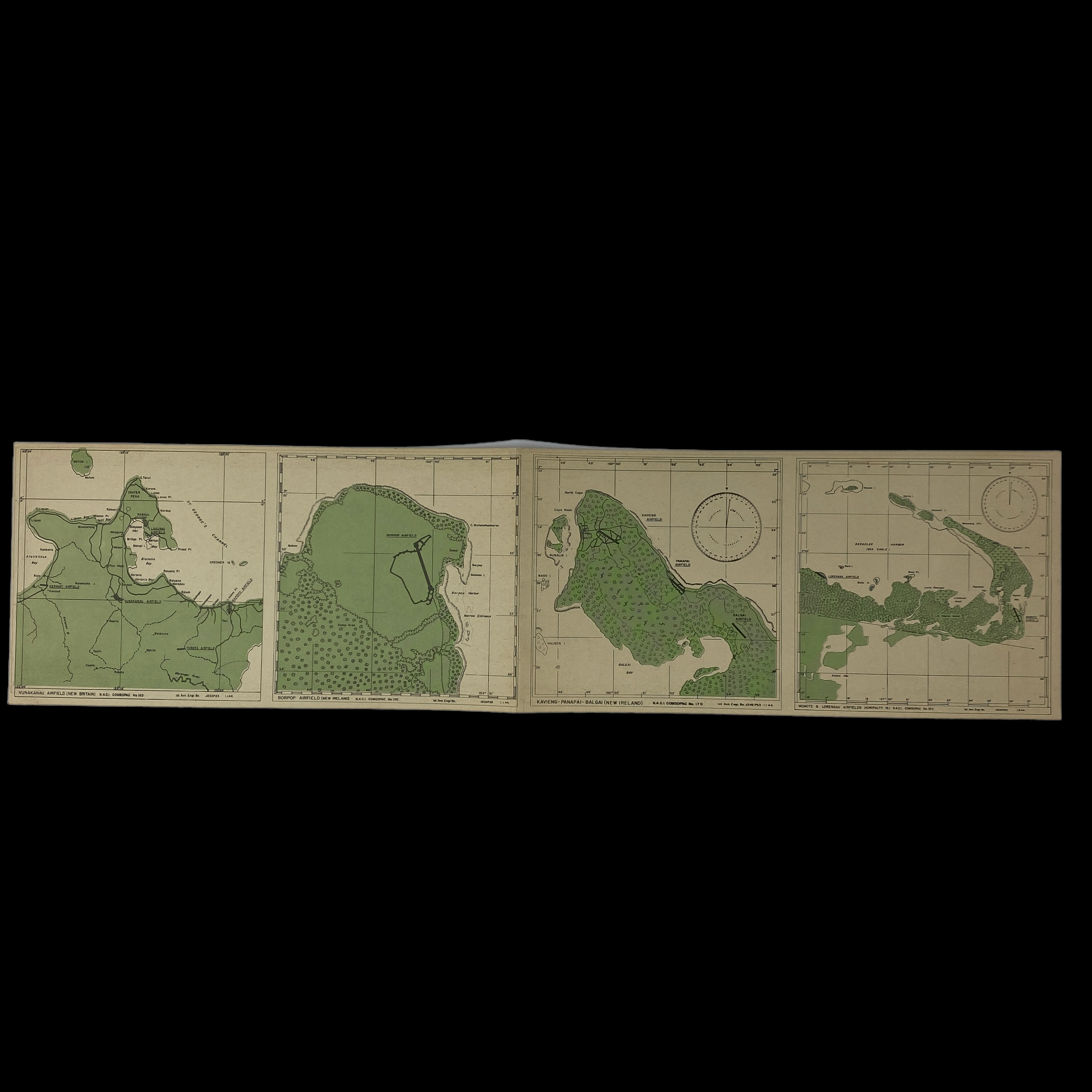
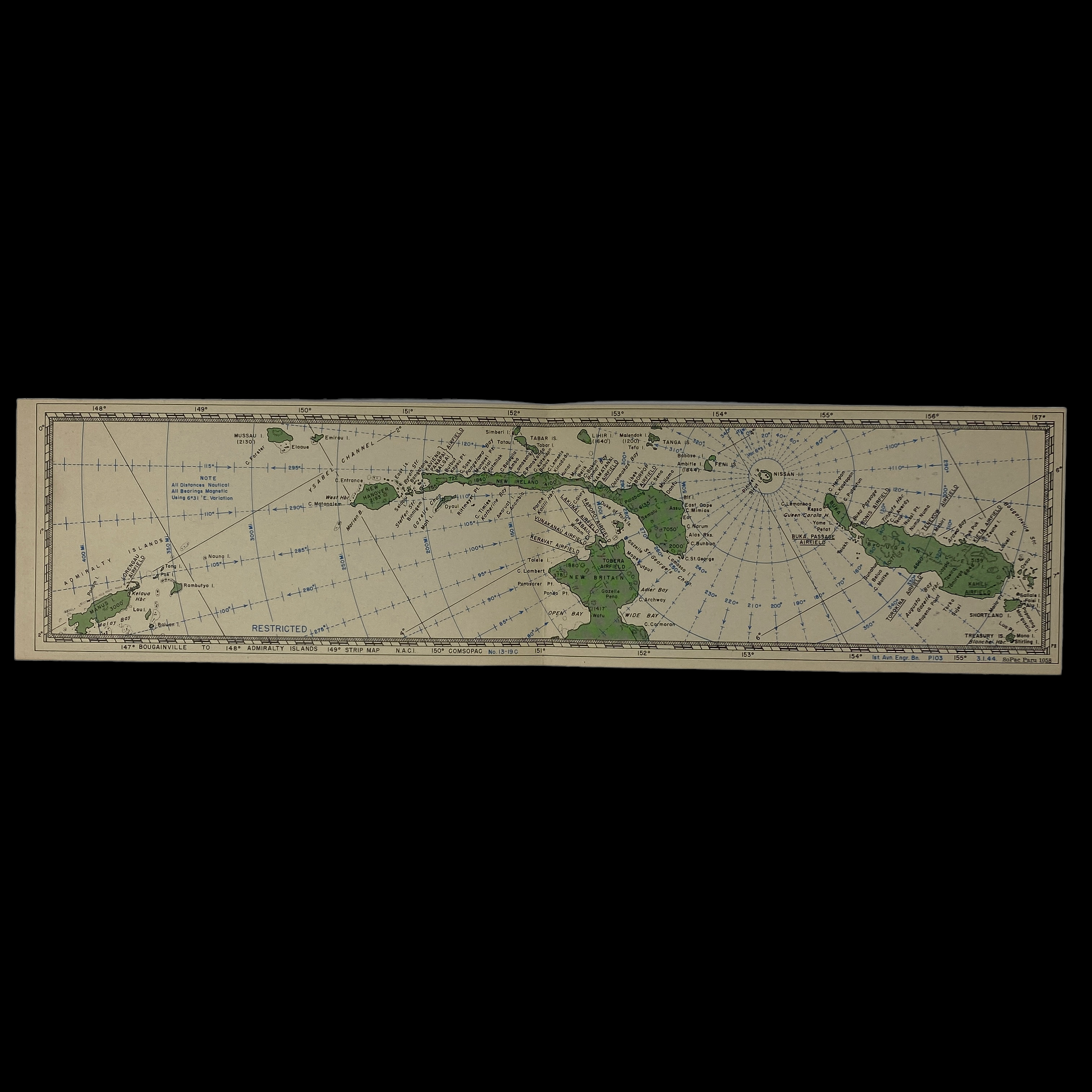


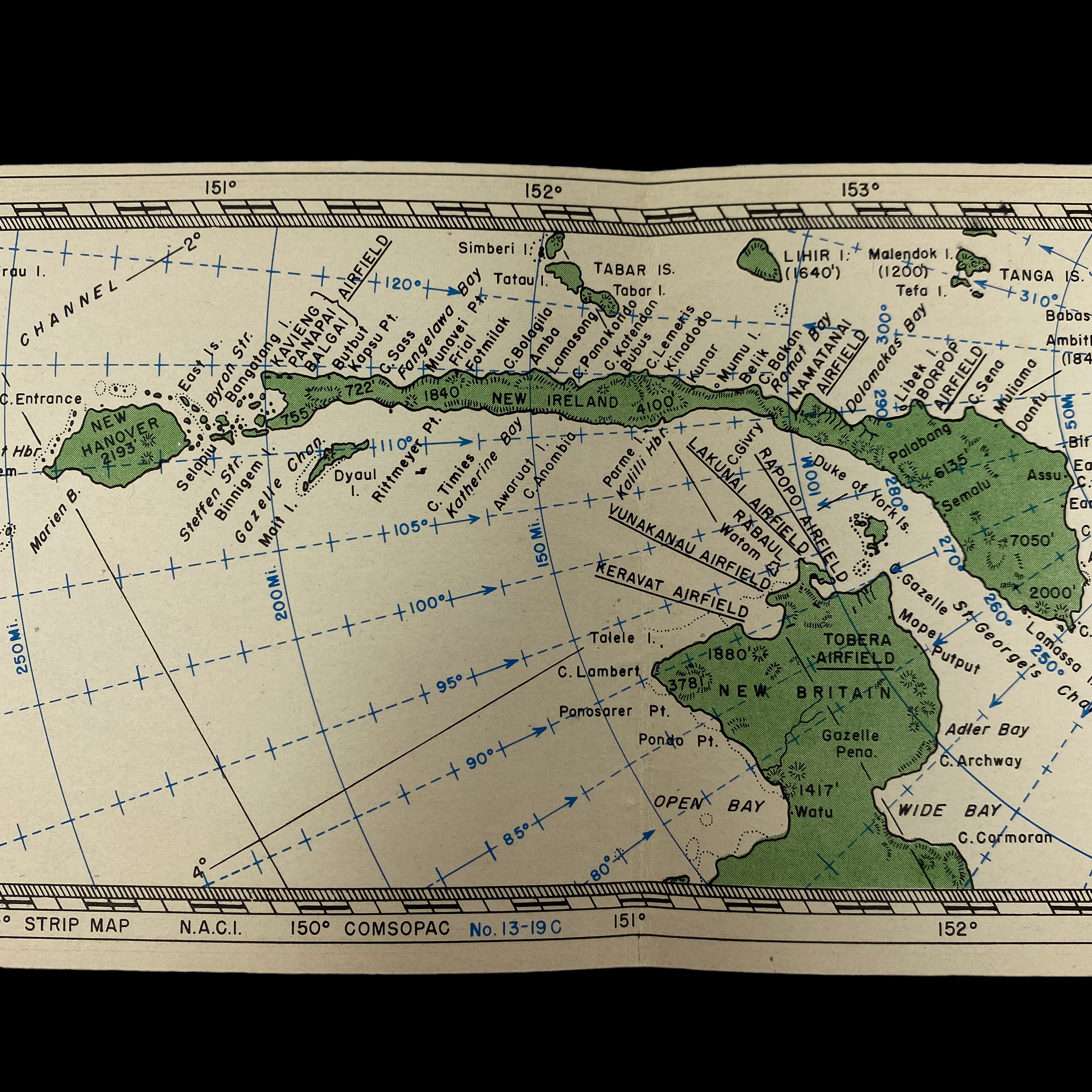



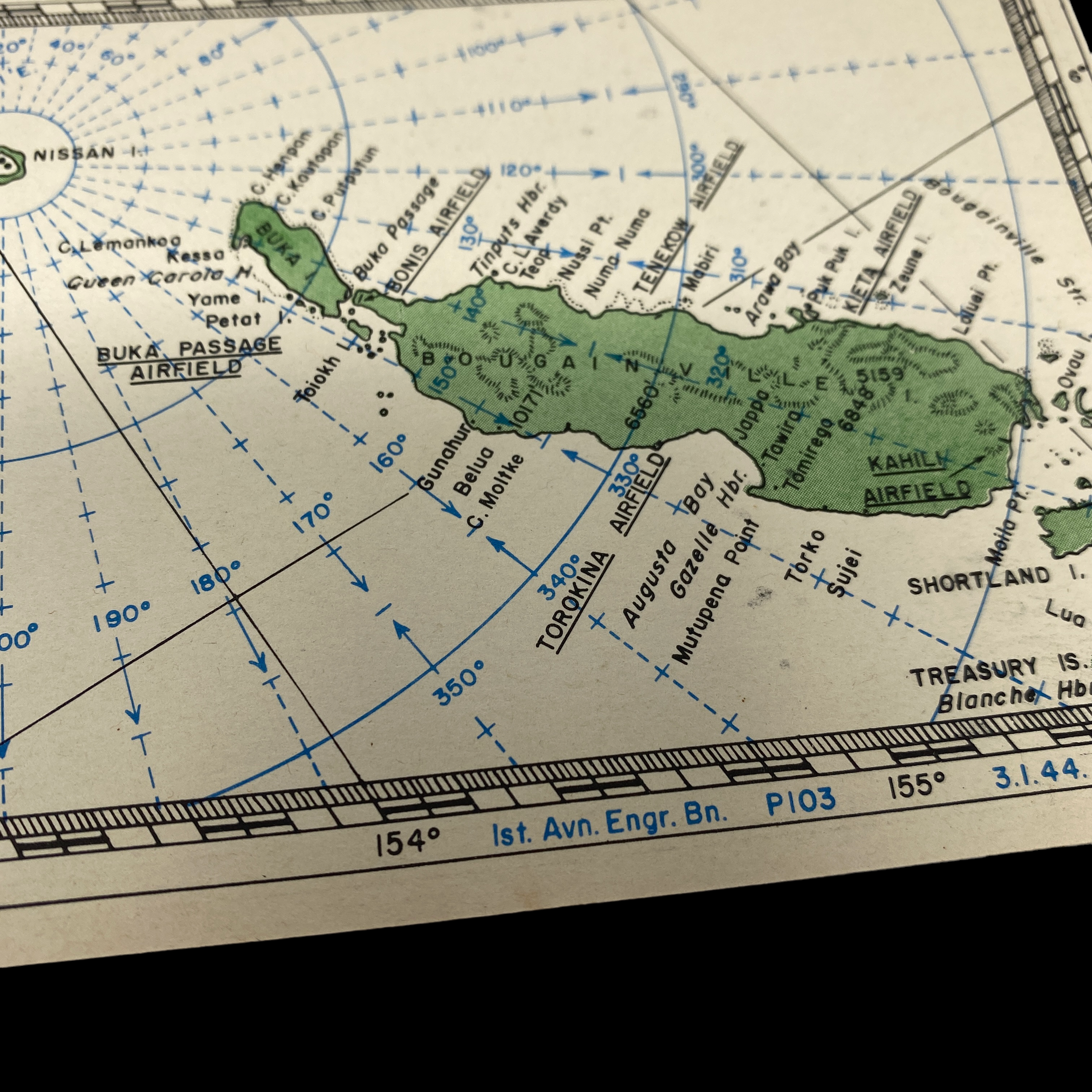



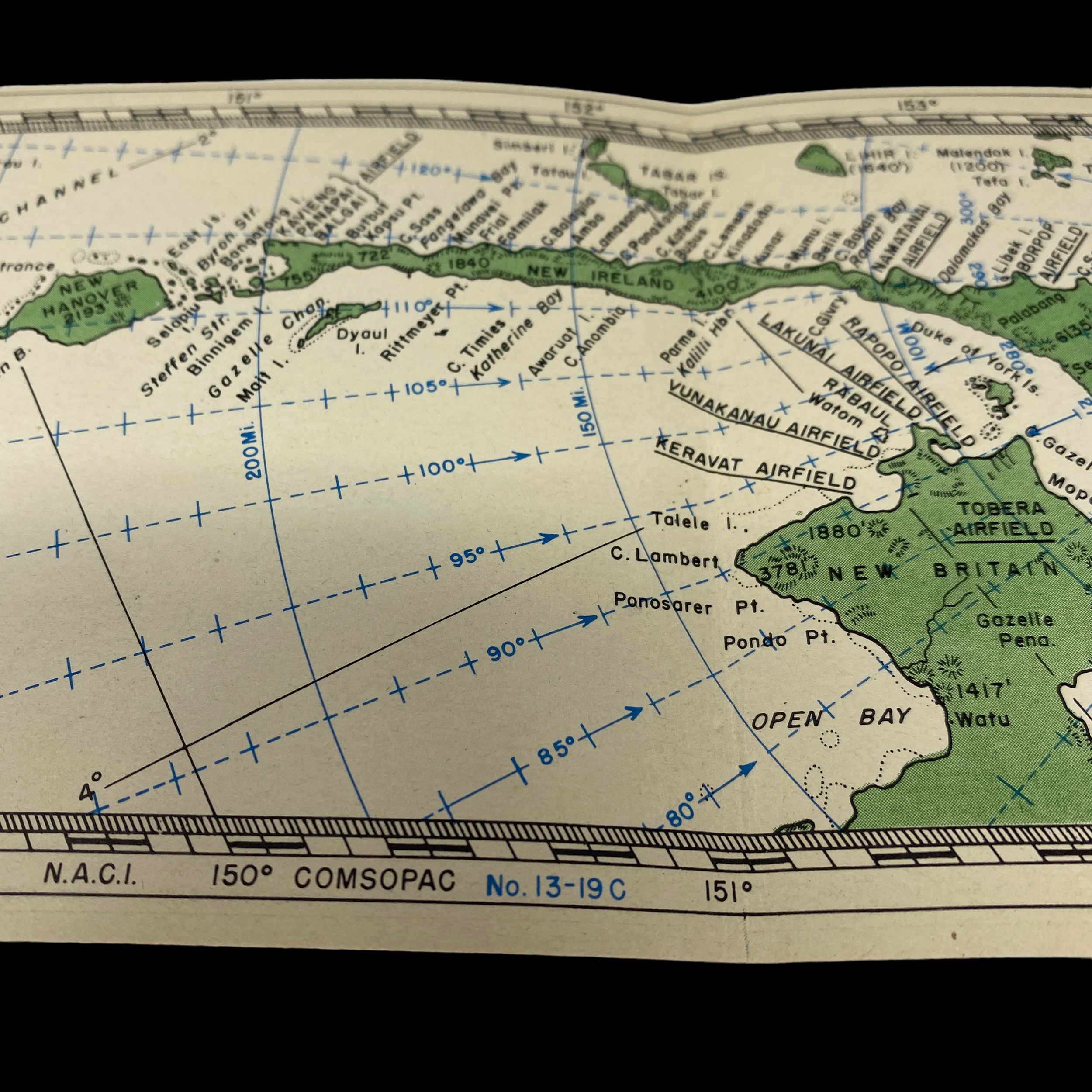









RARE! WWII Operation Cartwheel U.S. Pilot Solomon Islands Target Mission Map Rabaul Airfield
Comes with C.O.A.
This rare and museum-grade ‘RESTRICTED’ Pacific Theater operations air navigation map was used during the Allied air attacks during Operation Cartwheel. Operation Cartwheel (1943–1944) was a major military operation for the Allies in the Pacific theatre of World War II. Cartwheel was an operation aimed at neutralising the major Japanese base at Rabaul. The operation was directed by the Supreme Allied Commander in the South West Pacific Area (SWPA), General Douglas MacArthur, whose forces had advanced along the northeast coast of New Guinea and occupied nearby islands. Allied forces from the South Pacific Area, under Admiral William Halsey, advanced through the Solomon Islands toward Bougainville. The Allied forces involved were from Australia, the Netherlands, New Zealand, the US and various Pacific Islands.
This extremely rare double-sided target map notes targets of Japanese airfields on BOUGAINVILLE, NEW BRITAIN, & NEW IRELAND in the ADMIRALTY ISLANDS. The backside of the mission target map shows some of the most famous Japanese airfields in this combat area such as RABAUL AIRFIELD, LAKUNAI AIRFIELD, YUNAKANUA AIRFIELD, RAPOPO AIRFIELD, BORPOP AIRFIELD, KAVIENG AIRFIELD, PANAPAI AIRFIELD, BALGAI AIRFIELD, LORENGAU AIRFIELD, and many others.
As per military classification guidelines at the time, it states, “It is recommended that "Top Secret" material - Operation Plans and Orders - be reclassified downward to "Secret or Confidential" prior to the start of an operation by a sufficient length of time to permit of adequate and timely distribution to subordinate officers and pilots concerned. Only when in that area of combat theater can maps, reports, and plans be re-classified as “Restricted” to be used in combat and in the field.”
This map was specially created to be used by U.S. pilots operating during Operation Cartwheel and to be carried in the aircraft to help pilots navigate to their designated target areas.
U.S. Pilots During Operation Cartwheel:
During World War II, United States pilots and aircraft played a crucial role in the Allied victory. One significant operation that exemplified the skill and bravery of these pilots was Operation Cartwheel, which was a series of coordinated campaigns to isolate and capture the major Japanese bases in the Pacific.
One of the key figures in Operation Cartwheel was US Army Air Forces Major General George Kenney, who served as the commander of the Fifth Air Force and played a crucial role in the planning and execution of the operation. Kenney was known for his innovative tactics and his ability to adapt to the unique challenges of the Pacific Theater.
One of the most important elements of Operation Cartwheel was the use of long-range bombers and fighters to neutralize Japanese air power and interdict their supply lines. The B-24 Liberator and B-29 Superfortress were among the main bombers used in the operation, and they proved to be highly effective at hitting targets deep in enemy territory. The P-38 Lightning and P-47 Thunderbolt were also crucial to the operation, serving as both fighters and ground attack aircraft.
In addition to the use of air power, Operation Cartwheel also involved amphibious landings and ground assaults by Allied troops. The US Navy played a vital role in these operations, with aircraft carriers launching waves of fighter and bomber sorties to support the ground forces.
One of the most significant battles of Operation Cartwheel was the Battle of Papua New Guinea, in which Allied forces sought to capture the key Japanese base at Lae. The battle was characterized by brutal jungle fighting and intense air battles, with US pilots facing off against skilled Japanese pilots and anti-aircraft artillery. Despite facing heavy resistance, the Allies were ultimately able to capture Lae and other key bases in the region, paving the way for the eventual Allied victory in the Pacific.
Overall, Operation Cartwheel was a testament to the skill and bravery of US pilots and aircraft during World War II. These courageous men and women played a crucial role in the Allied victory and helped to turn the tide of the war in the Pacific.
Rabaul Airfield:
The US attack on Rabaul Airfield during World War II was a major turning point in the Pacific Theater and a key moment in the Allied victory. Rabaul, located on the island of New Britain in the Solomon Islands, was a key Japanese stronghold and home to a large naval base and airfield. The attack on Rabaul was a complex and risky operation that required a coordinated effort by the US Navy and Army Air Forces.
The operation began in November 1943, when Allied forces launched a series of air raids against Rabaul, targeting the airfield and other key military installations. The attack was led by Major General George Kenney, the commander of the Fifth Air Force, who had developed a detailed plan for the assault. Kenney's plan involved using a combination of long-range bombers and fighters to neutralize the Japanese air defenses and destroy key military targets.
The main bombers used in the attack were the B-24 Liberator and B-25 Mitchell, which were able to carry a large payload of bombs and were well-suited for the long-range mission. The B-24s were equipped with radar, which allowed them to fly through the thick clouds that often enveloped the island. The fighters included the P-38 Lightning and P-47 Thunderbolt, which were used to escort the bombers and provide air cover.
The attack on Rabaul was a major success, with the Allied forces suffering relatively few losses while inflicting significant damage on the Japanese defenses. The airfield was heavily damaged, as were several other key military installations. The attack also served to isolate Rabaul from the rest of the Japanese Empire, making it much more difficult for the Japanese to reinforce and resupply the island.
The attack on Rabaul was a key moment in the Allied victory in the Pacific, as it significantly weakened the Japanese military and set the stage for further Allied advances in the region. It was also a testament to the bravery and skill of the US pilots and aircraft who took part in the operation, who faced significant risks and challenges in order to achieve their objectives. The bravery and determination of these men and women helped pave the way for the eventual Allied victory in the Pacific.